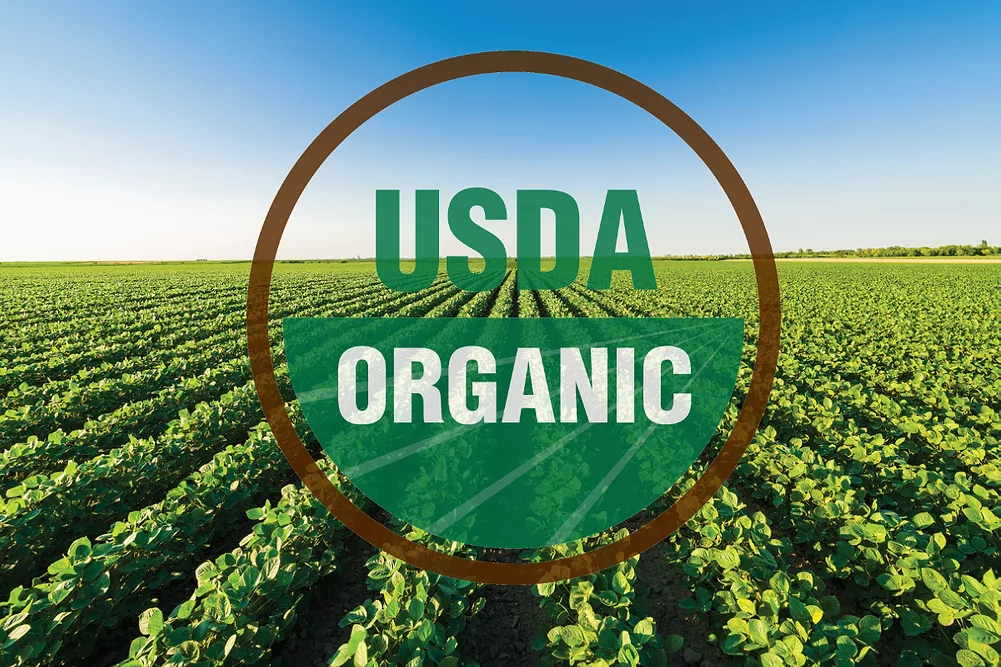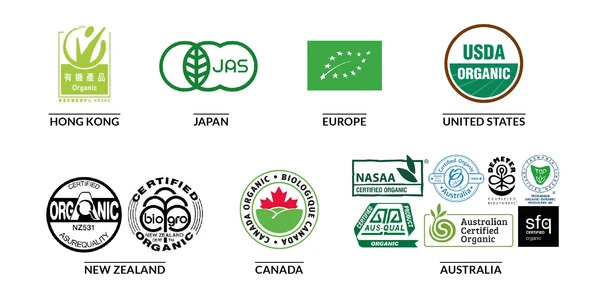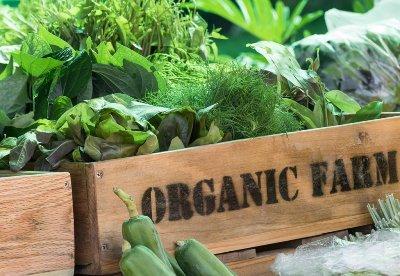
How to Meet Organic Export Requirements to the USA: Step-by-Step Guide
In this guide, we will share all the requirements for exporting organic products to the United States, from USDA certification to import documents. Of course, we will pay special attention to the requirements for exporting food to the United States, as they are the most in-demand products. Join us on this step-by-step journey to successfully conquer the U.S. organic market.
Did you know that organic export requirements are fundamental to accessing the world's largest market? The United States is the world's leading consumer of organic products, reaching an approximate value of $83 billion in 2023, with an annual growth rate of 7.47%.
Projections are even more promising, as this market is expected to exceed $158.2 billion by 2032. However, exporting food to the United States requires complying with strict regulations, especially when it comes to organic products. Currently, import certificates are mandatory for all organic products entering the United States, and both the U.S. importer and the foreign exporter must be certified.
Step 1: Understanding What Organic Export to the U.S. Entails
Organic export to the United involves much more than simply sending products without chemicals. To understand organic export requirements, we must first understand what the term "organic" really means in this specific context.
Difference Between Organic, Ecological, and Natural
Although these terms seem similar, they have important differences. An organic product specifically refers to the production process and not the product itself. This means it has been certified as produced under clearly defined organic production methods, without the use of synthetic pesticides or fertilizers.
In the context of export, it is essential to know that in Spain and the EU the term "ecological" is used, while in the United States "organic" is used. Although according to European Union legislation the terms ecological, biological, and organic are equivalent, when exporting to the U.S. you must use the correct terminology.
A natural product, on the other hand, is simply derived from plants, animals, or minerals, but does not necessarily meet organic standards. Not all natural products are organic, and this distinction is crucial to avoid misleading labeling.

Which Products Require Organic Certification
The requirements for exporting food to the United States include organic certification for:
- Fresh produce such as fruits and vegetables
- Meat and dairy products
- Processed or packaged foods and beverages
- Textile and fiber products
- Cosmetics and personal care products
According to NOP regulations, all fruits and vegetables labeled or sold as organic need certification from an approved certifier. Likewise, any company that produces, handles (sells, processes, or packages) organic products must obtain this certification.
Importance of the USDA Organic Seal
The USDA Organic seal is essential for several reasons:
- It guarantees to American consumers that the product meets the standards of the National Organic Program.
- It allows access to the U.S. organic market.
- It differentiates the product in a highly competitive market.
There are two main categories for labeling:
- 100% Organic: When all ingredients are organic.
- Organic: If at least 95% of the ingredients are organic.
In both cases, the label must include the name of the certifying agent and the USDA Organic Seal. Without this certification, it is prohibited to market the product as organic in U.S. territory, regardless of whether it has certifications from other countries.
Step 2: Obtaining USDA Organic Certification
To export organic products to the American market, obtaining USDA certification is a mandatory and unavoidable step. Obtaining this certification requires a structured process that guarantees organic integrity from production to commercialization.
Requirements of the National Organic Program (NOP)
The NOP establishes strict standards that every operation must meet. Fundamental aspects include:
- Maintaining land in a 3-year conversion period without applying prohibited substances.
- Improving soil quality and minimizing erosion.
- Absolute prohibition of genetically modified organisms.
- Exclusive use of preventive practices for pest control.
- In livestock, prohibition of antibiotics and growth promoters.
How to Choose an Accredited Certifying Agent
The certificate must be issued exclusively by an entity accredited by the USDA. When selecting a certifier, consider:
- Their experience with your specific type of product.
- Their presence in your region or country (each exporting country may have one or more recognized agents).
- Costs and response times.
- Additional services such as training.
Some certifiers, like BIO LATINA, certify over 400 operators with more than 50,000 producers in Latin America.
Documentation Needed to Start the Process
The central element to initiate certification is the Organic System Plan (OSP). This document details:
- Complete production processes.
- Implemented traceability system.
- Purchasing management procedures.
- Protocols to prevent contamination.
- Procedures for handling non-conformities.
Additionally, you must submit a map of the plots and notify the competent authorities about the start of operations.
Audit and Annual Renewal
Once the application is completed, the certifying agent performs:
- An initial document review (approximately three business days).
- A physical inspection of the operation to verify compliance.
- An evaluation of the inspection report.
- Issuance of the certificate if it meets the requirements.
Certification must be renewed annually within a period not exceeding 365 days from the last inspection date. During annual inspections, certifiers must perform a mass balance or "input-output" audit to confirm that inputs match the final production.
Step 3: Complying with Import and Labeling Requirements
Once certification is obtained, the next challenge in organic export requirements is complying with the correct import and labeling processes.

NOP Import Certificate: What It Is and How to Get It
The NOP Import Certificate is now mandatory for all organic products entering the United States. This document must be issued before the product leaves the country of origin and cannot be issued retroactively. To obtain it:
- Request it from your certifier with at least 5 business days' notice.
- Provide complete information about the exporter and importer, including their NOP OID IDs.
- Starting September 19, 2024, shipments without a valid certificate will be rejected or sold as conventional.
Labeling Requirements for Organic Products
Labeling is a crucial part of the requirements for exporting food to the United States. Each label must include:
- The name of the certifying agent below the handler information.
- Identification of each organic ingredient in the ingredient list.
- Country of origin of the organic ingredients.
- Lot number and producer data.
Common Labeling Errors
Avoid these errors which can cause rejections:
- Using the USDA seal on "Made with Organic" products.
- Not correctly identifying the certifier.
- Highlighting your own logo more than the USDA seal.
- Labeling non-organic ingredients as organic.
Step 4: Preparing Logistics and Customs Process
Logistical and customs preparation represents the final link in the chain of organic export requirements. Once the product is certified, it's time to navigate the U.S. entry process.
Customs Declaration and Tariffs
Every organic product must be specifically declared as such in the Single Administrative Document (SAD). Furthermore, starting in February 2025, it is mandatory to use the Single Entry Point for Import Control Applications of Organic Products from Third Countries. For products not covered by Regulation (EU) 2018/848, exemption code Y929 must be used in box DE 12 03 of the customs declaration.
Verification of Prohibited Substances
The organic importer must implement a documented control system to verify that the shipment has not had contact with prohibited substances or been exposed to ionizing radiation since its export. This procedure will be verified during the importer's organic inspection.
Using the ACE System and OR2 Codes
The U.S. importer or customs broker must enter the NOP Import Certificate number into CBP's ACE (Automated Commercial Environment) system, selecting the OR2 option when prompted. Although the Certificate does not need to physically accompany the shipment, the data must be associated in the ACE system.
Recommendations to Avoid Border Rejections
To minimize the risk of rejection:
- Ensure products are identified as organic on all documents (invoices, packing lists, bills of lading).
- Keep import documents available for inspection.
- Request the NOP Import Certificate from your certifier well in advance.
- Verify that the SOIVRE Service has completed its inspections before customs clearance.
Conclusion
Exporting organic products to the United States represents an extraordinary opportunity for producers committed to sustainable agriculture. However, as we have seen, this process requires meticulous planning and attention to detail. The four fundamental steps—understanding organic certification, obtaining USDA certification, complying with correct labeling, and adequately preparing logistics—function as essential pillars for any successful strategy.
Certainly, the U.S. organic market offers enormous potential for those willing to navigate its regulatory complexities. NOP certification, although demanding, opens the door to consumers who increasingly value products grown without synthetic chemicals or genetically modified organisms.
Throughout this process, meticulous documentation is indispensable. From the Organic System Plan to the Import Certificate, every document is a vital piece of the export puzzle. Likewise, correct labeling not only meets legal requirements but also effectively communicates the integrity of our product to the American consumer.
Upcoming regulatory changes for 2024 and 2025 make constant updating paramount. Therefore, maintaining fluid communication with your certifying agent will help anticipate problems and avoid costly border rejections.
In the end, successful organic export combines technical knowledge with strategic planning. Producers who rigorously follow these requirements will not only access the world's largest organic market but will also build lasting business relationships based on trust and certified quality.
The persistence and dedication required to maintain high organic standards will definitely be worth it when we see our products on American shelves, thereby contributing to the sustainable growth of the sector and the international expansion of our organic brand.










